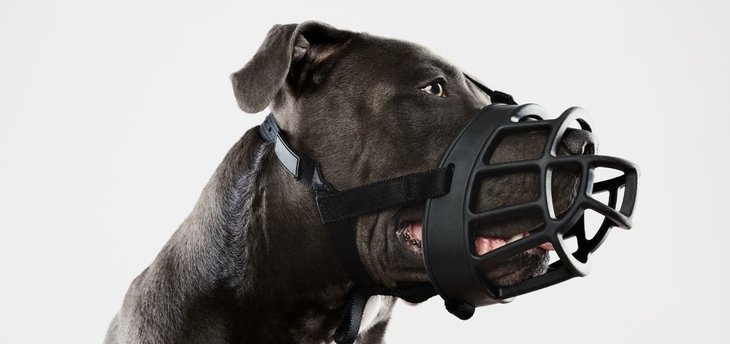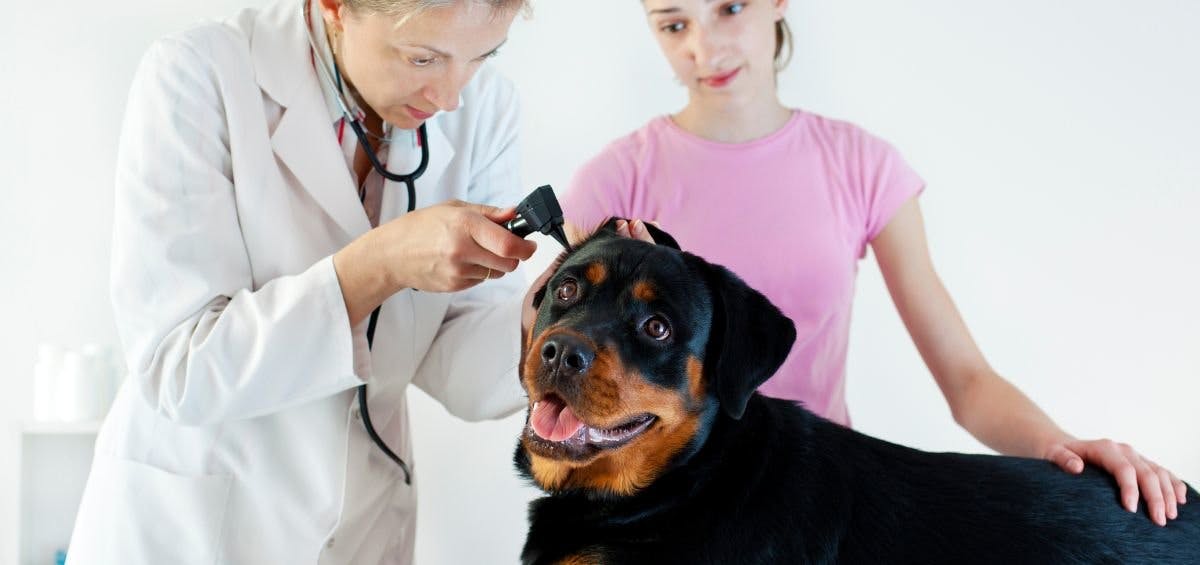Preparing For Aggressive Dogs At The Vet: 7 Key Tips
Navigating the challenge of handling an aggressive dog at the vet can be stressful for everyone involved. This blog post provides practical advice and proven techniques that can help ensure the safety and comfort of the veterinary staff, their canine patients, and their anxious pet parents.
By enhancing our approach to these situations and arming dog owners with the right resources and strategies, we can continue to provide exceptional care — even under challenging circumstances. Let's explore these strategies together to make every vet visit a positive experience for all.
- Understanding Dog Aggression
- The Importance of Being Prepared
- How to Take an Aggressive Dog to the Vet: Tips for Pet Owners
Understanding Dog Aggression
Dogs can become aggressive for various reasons, and understanding these triggers is the first step to managing their behavior effectively. Here are some common explanations for why a dog might exhibit aggressive tendencies:
Fear response
Imagine being in an unfamiliar place with unfamiliar faces, coupled with the anxiety of being handled by strangers. This can be overwhelming for our canine companions. With its unique smells, sounds, and sights, the vet office can trigger a fear response in dogs, leading them to act aggressively as a defense mechanism.
Pain-induced aggression
Like humans, dogs can become irritable or defensive when in pain. If a dog is at the vet due to an ailment or injury, the discomfort might make them more prone to aggressive reactions — especially when touched or handled in sensitive areas.
Lack of socialization
Puppy socialization is a crucial aspect of a dog's upbringing. Poor or inadequate exposure to various environments, people, and other animals during the formative months can cause dogs to become apprehensive or aggressive in new situations. The vet office, being a hub of activity, can be particularly challenging for such dogs.
With more context behind why a dog is aggressive at the vet, the veterinary staff can be better prepared to respond appropriately and prevent the situation from escalating. With patience, understanding, and the right approach, even the most anxious dogs can feel at ease during their vet visits.
The Importance of Being Prepared
Preparation is the cornerstone of managing aggressive dogs and can:
- Empower the staff, giving them the confidence and tools to handle the dog effectively.
- Act as a preventive measure, minimizing the risk of potential bites and ensuring the safety of everyone involved.
- Serve as an educational opportunity, teaching the client the nuances of managing their dog's behavior.
- Increase practice revenue by marketing your services to pet owners looking for nearby vets for aggressive dogs.
- Build veterinary client loyalty and trust by demonstrating that the practice is equipped to handle aggressive dogs and that the staff knows the best way to approach the problem.
How to Take an Aggressive Dog to the Vet: Tips For Pet Owners
Communicating with clients in veterinary practices is key because it gives everyone adequate time to prepare for a positive experience. The next time a asks how to take an aggressive dog to the vet, here are some helpful tips:
Desensitize handling at home
Routine handling drills can acclimatize a dog to being touched and examined. Instruct clients to gently run their hands along the dog's body, lift the lips to inspect the teeth, and feel the ears. When the dog remains calm, they should receive positive reinforcement through treats or praise.
Practicing these drills in a relaxed home environment can make the actual vet examination a smoother experience, and socializing puppies from a young age is most effective.
Muzzle train ahead of time
Muzzling can be a stressful experience for a dog, especially if introduced suddenly in an unfamiliar environment. Advise clients to acclimate their dog to wearing a muzzle at home and offer guidance on effective muzzle training techniques.
Regular exposure to a muzzle in a familiar setting can help the dog remain calmer during vet visits. Using their own muzzle can further alleviate stress, given its familiarity.

Build a rapport
Familiarity breeds comfort. Encourage clients to visit the clinic occasionally without any scheduled appointments. Over time, offering treats can help. If the dog hesitates to take treats from the staff, let the owner feed them.
The objective is to foster a positive association between the dog, the clinic, and the team. This association might require multiple visits to establish but can significantly reduce the dog's defensiveness over time.
Schedule appointments during quiet office hours
If a client calls to ask about taking an aggressive dog to the vet, suggest an appointment time when the office typically isn't busy. During quiet hours, there will be less stimulus that could potentially trigger a dog on edge, compared to the chaos that comes with the morning, evening, and mid-day rush.
Many vet practices also have separate seating areas where clients can wait in seclusion for their pets to be seen.
Follow a pre-appointment checklist
Ensuring a smooth veterinary visit starts long before the appointment itself. One effective way to prepare both the dog and the owner is by providing them with a simple checklist:
- Exercise Before Visit: Encourage clients to engage their dog in some exercise before the appointment. This helps burn off any excess energy for the visit.
- Pack Favorite Treats: Bring high-value treats to distract the patient and reinforce positive associations with the experience at the vet.
- Bring a Muzzle: Muzzles are essential for safety if the dog displays aggressive tendencies.
Collaborate with a local behaviorist
Consider partnering with experienced trainers or behaviorists to whom you can refer patients with behavioral disorders. These professionals can conduct informative seminars for your clients, share insights about how to manage aggression in dogs, and offer 1-on-1 consultations at home.
What's more, implementing a two-way referral system not only provides a valuable resource to your existing clients but can also help you grow your veterinary business through inbound referrals sent your way.
Recommend Pet Insurance
Pet insurance benefits vets and pets in a variety of ways. According to licensed insurance producer Kari Steere, here are a few of the most impactful ways pet insurance can improve the handling of aggressive dogs at the vet.
- Covers the cost of sedation: If a pet needs to be sedated during a sick visit in order to be safely examined by a veterinarian, many insurance policies will help cover the cost of the sedative.
- Covers the cost of the exam fee: Additionally, some but not all providers cover a portion of the exam fee for sick visits (after the client's deductible has been met).
- Promotes routine vet visits: Policyholders with wellness plans can usually offset the cost of annual checkups at the vet. Consistent vet check-ups can pinpoint underlying issues that may be influencing a dog's aggressive tendencies, such as undetected ailments. With the backing of pet insurance, owners are likely to feel more at ease scheduling these regular appointments, knowing they have financial support.
- Provides access to expert care: Some providers also cover the cost to diagnose and treat behavioral issues in dogs. This can give pet owners access to treatment therapies and healing modalities they might not otherwise have been able to afford.
- Alleviates stress: A dog's visit to the vet can be a stressful experience for both the pet and the owner — but this is especially true for dogs with aggressive tendencies. The majority of vets agree that pet insurance reduces stress and promotes more positive experiences for both the staff and clients.
Pawlicy Advisor can help you save time and experience smoother office visits by increasing pet insurance enrollment through streamlined client education.
Final Thoughts
Managing aggressive dogs at the vet requires education, preparation, and patience. By implementing these strategies, veterinary clinics can ensure a safe and positive experience for all parties involved. Remember, every dog deserves compassionate care, and with the right approach, even the most challenging cases can be handled with grace and expertise.
Do you want to find the best pet insurance?
Let's analyze your pet's breed, age, and location to find the right coverage and the best savings. Ready?
Analyze My PetAbout Pawlicy Advisor
The pet insurance marketplace endorsed by veterinarians, at Pawlicy Advisor we make buying the best pet insurance easier. By comparing personalized coverage and pricing differences we can save you a ton of money, up to 83% in some instances!
Instantly Compare Pet Insurance Plans
Guides
Determine If Pet Insurance Is Worth It
Comparison Charts
Find Your State
Dog Insurance
Certified Dog Trainer
- Ashley Reely is the passionate force behind Meraki Dogs, a platform dedicated to canine enthusiasts. With 12 enriching years in the pet industry, her expertise encompasses dog training and behavior modification, including reactivity, separation anxiety, and aggression. She's also worked in the field as a Kennel Tech in a Veterinary Office, Dog Daycare Attendant, Groomer, and Rescue Volunteer. In addition to hands-on experience, Ashley has carved a niche as a content writer, specifically catering to pet lovers.
